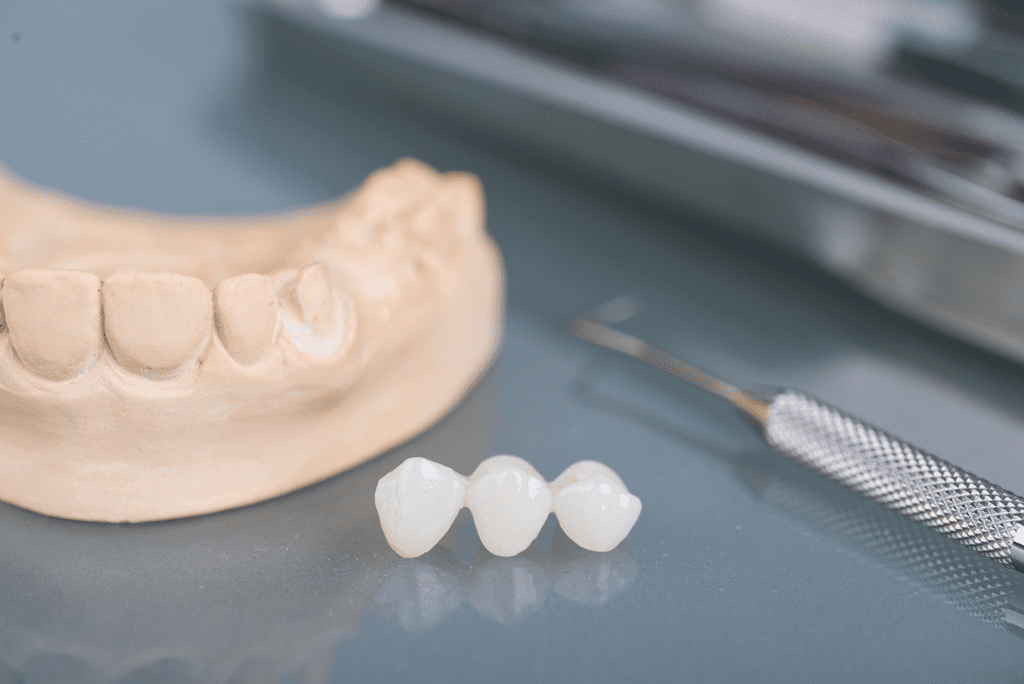[vc_row][vc_column][vc_column_text]
Do you have oral health problems? In this post, we address dental bridges and assess who is suitable for Roseville, MN, dental bridges, why they are necessary, and what happens when deciding to get them.
What Is a Dental Bridge?
Also known as a “pontic,” a dental bridge is a treatment that aims to close the gaps in your mouth caused by missing teeth. It is a false tooth, but compared to implants and dentures, it typically requires what’s called an “abutment” tooth. “Abutment” is a fancy word for natural teeth, and they are essential because the bridge is attached to your remaining teeth to hold the false version in place.
They are four common types of dental bridge in Roseville, MN. They are:
- Traditional bridge
- Cantilever bridge
- Maryland bridge
- Implant-supported bridge
How they are fixed into place depends on the type of crown. For instance, the traditional and cantilever variations are held with a crown’s help, whereas a Maryland bridge is bonded onto the backs of abutment teeth. An implant-supported bridge is supported via implants embedded into the jaw.
When Do You Require Dental Bridges?
Roseville, MN, dental bridges are fitted for several reasons, but by far the most possible is to replace missing teeth and the gaps they leave. Unfortunately, everything from decay to an accident can loosen your teeth, which increases the likelihood of them falling out. Thankfully, bridges allow you to forget about your insecurities as the gaps are bridged with the help of false teeth.
Of course, you might also decide bridges are essential due to the following:
- Inability to chew: When your teeth are gone, it’s harder to chew, which is incredibly frustrating and uncomfortable as it can stop you from enjoying your favorite meals.
- Misshapen bite: A direct result of gaps in your jawline is a distorted bite. With less stability in your mouth, teeth and gums can move, meaning your bite will have less force. Bridges hold everything in place and restore your natural bite.
- Hollowed face: In extreme cases, as your mouth changes shape, your face can follow and become hollow. Again, a bridge adds structure to prevent this from occurring in the first place.
- Speech problems: You may find that the gaps in your mouth make it tougher to pronounce words and enunciate correctly. Therefore, bridges can restore your speech as, like normal teeth, they act as reference points for the tongue.
How Does a Dentist Fit Bridges?
To begin with, they inspect the remaining teeth and evaluate if they are strong enough to hold a bridge. If they are, your dentist will take an impression of your mouth and send the specifications to a laboratory. This is where the false tooth is manufactured. When it is ready, the teeth are filed or drilled to size and shape, crowns are put on either side of the abutment teeth, and they are joined by the fake tooth. Cement fixes them into position.
Alternatively, if your bridges require a bond, it is glued onto the back of abutment teeth, negating unnecessary filing and drilling.
[/vc_column_text][/vc_column][/vc_row]



